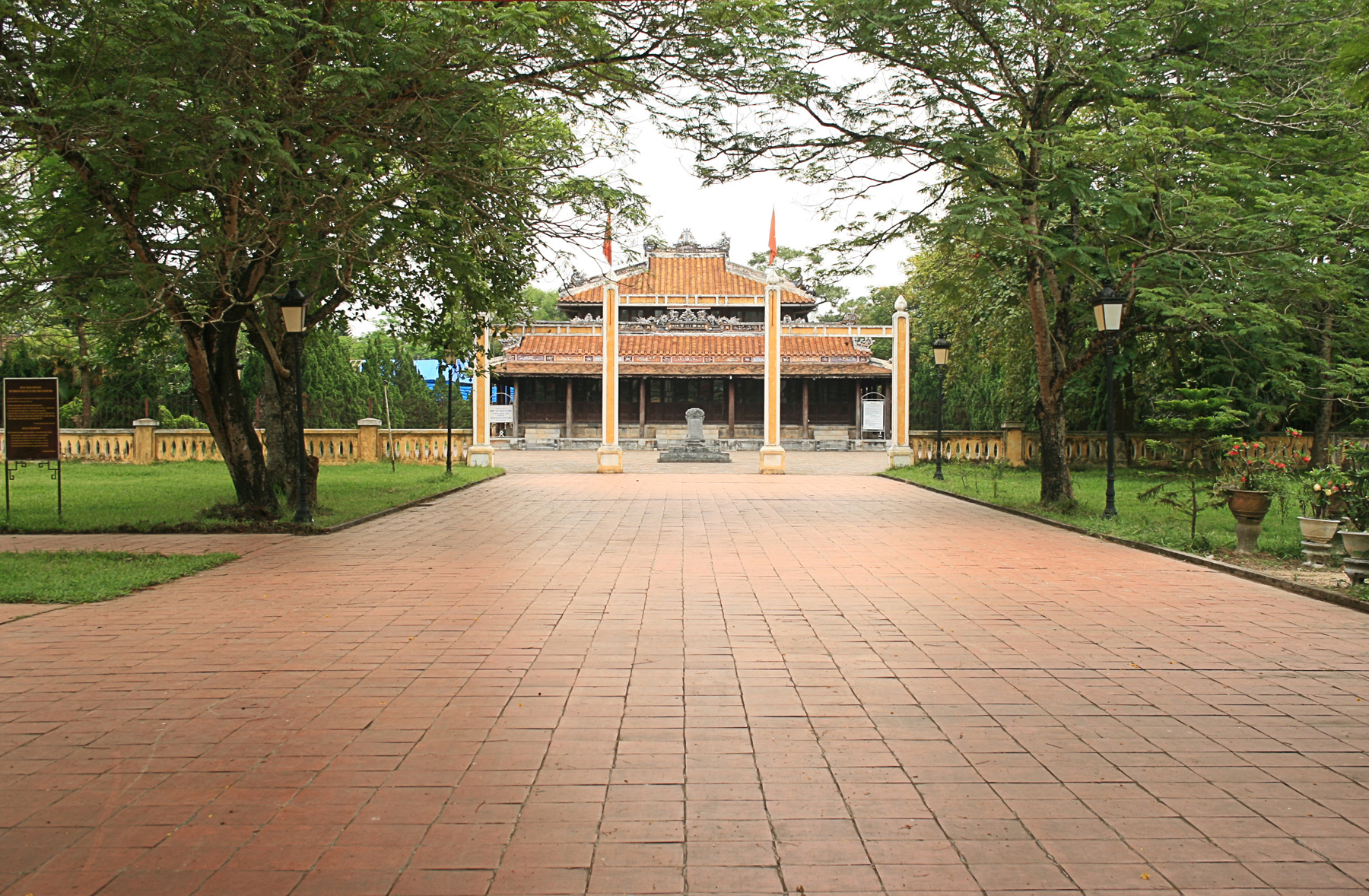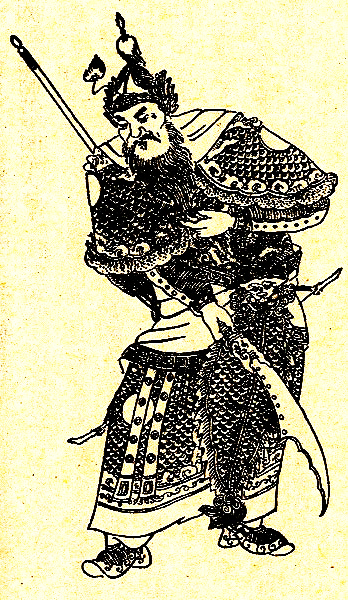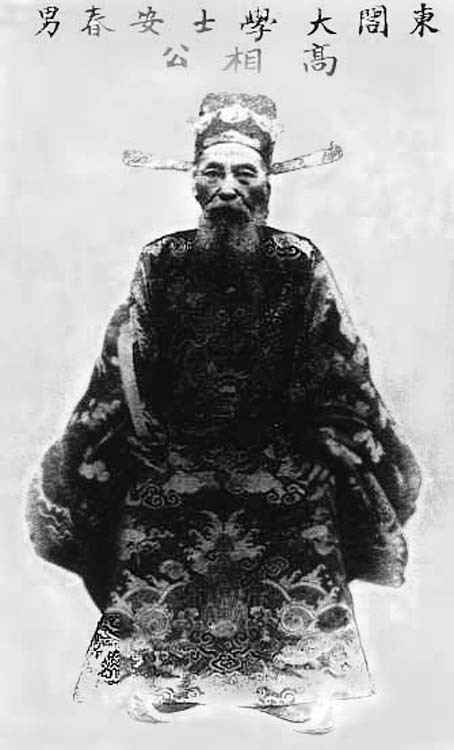|
Ministry Of Education (Nguyễn Dynasty)
During the Nguyễn dynasty period (1802–1945) of Vietnamese history its Ministry of Education was reformed a number of times, in its first iteration it was called the Học Bộ ( Hán tự: 學部), which was established during the reign of the Duy Tân Emperor (1907–1916) and took over a number of functions of the '' Lễ Bộ'', one of the '' Lục Bộ''. The Governor-General of French Indochina wished to introduce more education reforms, the Nguyễn court in Huế sent Cao Xuân Dục and Huỳnh Côn, the ''Thượng thư'' of the ''Hộ Bộ'', to French Cochinchina to discuss these reforms with the French authorities. After their return the ''Học Bộ'' was established in the year Duy Tân 1 (1907) with Cao Xuân Dục being appointed to be its first ''Thượng thư'' (minister). Despite nominally being a Nguyễn dynasty institution, actual control over the ministry fell in the hands of the French ''Council for the Improvement of Indigenous Education in Annam' ... [...More Info...] [...Related Items...] OR: [Wikipedia] [Google] [Baidu] |
Classical Chinese
Classical Chinese, also known as Literary Chinese (古文 ''gǔwén'' "ancient text", or 文言 ''wényán'' "text speak", meaning "literary language/speech"; modern vernacular: 文言文 ''wényánwén'' "text speak text", meaning "literary language writing"), is the language of the classic literature from the end of the Spring and Autumn period through to the either the start of the Qin dynasty or the end of the Han dynasty, a written form of Old Chinese (上古漢語, ''Shànɡɡǔ Hànyǔ''). Classical Chinese is a traditional style of written Chinese that evolved from the classical language, making it different from any modern spoken form of Chinese. Literary Chinese was used for almost all formal writing in China until the early 20th century, and also, during various periods, in Japan, Ryukyu, Korea and Vietnam. Among Chinese speakers, Literary Chinese has been largely replaced by written vernacular Chinese, a style of writing that is similar to modern spoken Mandarin ... [...More Info...] [...Related Items...] OR: [Wikipedia] [Google] [Baidu] |
Imperial Academy, Huế
The Imperial Academy ( vi, Quốc Tử Giám, vi-hantu, 國子監) was the national academy during the Nguyễn dynasty. It was located inside the Imperial City of Huế. History After the unification of Vietnam, Emperor Gia Long decided to move the capital from Hanoi to Huế. Following this decision, in 1803, a new Confucian academy was built in order to replace the Lê dynasty's Quốc Tử giám.Phan Thuan An, p. 150 The first academy, called Đốc Học đường, was a small block of buildings located at An Ninh Thượng village, Hương Trà district, some 5 kilometres east of Huế. It stood next to a Văn miếu (Confucian academy). By March 1820, emperor Minh Mạng Minh Mạng () or Minh Mệnh (, vi-hantu, 明 命, lit. "the bright favour of Heaven"; 25 May 1791 – 20 January 1841; born Nguyễn Phúc Đảm, also known as Nguyễn Phúc Kiểu) was the second emperor of the Nguyễn dynasty of V ... changed the academy name into Quốc Tử Giám ... [...More Info...] [...Related Items...] OR: [Wikipedia] [Google] [Baidu] |
Confucianism
Confucianism, also known as Ruism or Ru classicism, is a system of thought and behavior originating in ancient China. Variously described as tradition, a philosophy, a religion, a humanistic or rationalistic religion, a way of governing, or a way of life, Confucianism developed from what was later called the Hundred Schools of Thought from the teachings of the Chinese philosopher Confucius (551–479 BCE). Confucius considered himself a transmitter of cultural values inherited from the Xia (c. 2070–1600 BCE), Shang (c. 1600–1046 BCE) and Western Zhou dynasties (c. 1046–771 BCE). Confucianism was suppressed during the Legalist and autocratic Qin dynasty (221–206 BCE), but survived. During the Han dynasty (206 BCE–220 CE), Confucian approaches edged out the "proto-Taoist" Huang–Lao as the official ideology, while the emperors mixed both with the realist techniques of Legalism. A Confucian revival began during the Tang dynasty (618–907 CE). In the late Tang, C ... [...More Info...] [...Related Items...] OR: [Wikipedia] [Google] [Baidu] |
VietNamNet
VietNamNet (abbreviated as VNN) is an online newspaper in Vietnam affiliated to the Ministry of Information and Communications. Its content is published daily in both Vietnamese and English, and cover categories including international news, information technology, sports, music, fashion, online interviews, music, etc. History VietNamNet was granted the latest operating license on January 23, 2003 (license number: 27/GP-BVHTT). On May 15, 2008, it was proposed that VietNamNet's ownership be transferred from VNPT to Vietnam's Ministry of Information and Communications. In 2019, VietNamNet and Vietnam Post online newspapers were merged. Hacker attacks On January 4, 2011, VietNamNet's server was attacked by hackers - who then gained control of hundreds of thousands of computers. At that time, this was the largest denial-of-service attack to have ever happened in Vietnam - some compared it to the case of hackers attacking the US Department of Defense's website in 2009. Google an ... [...More Info...] [...Related Items...] OR: [Wikipedia] [Google] [Baidu] |
Hà Nội
Hanoi or Ha Noi ( or ; vi, Hà Nội ) is the capital and second-largest city of Vietnam. It covers an area of . It consists of 12 urban districts, one district-leveled town and 17 rural districts. Located within the Red River Delta, Hanoi is the cultural and political centre of Vietnam. Hanoi can trace its history back to the third century BCE, when a portion of the modern-day city served as the capital of the historic Vietnamese nation of Âu Lạc. Following the collapse of Âu Lạc, the city was part of Han China. In 1010, Vietnamese emperor Lý Thái Tổ established the capital of the imperial Vietnamese nation Đại Việt in modern-day central Hanoi, naming the city Thăng Long (literally 'Ascending Dragon'). Thăng Long remained Đại Việt's political centre until 1802, when the Nguyễn dynasty, the last imperial Vietnamese dynasty, moved the capital to Huế. The city was renamed Hanoi in 1831, and served as the capital of French Indochina from 1902 to 1945. On ... [...More Info...] [...Related Items...] OR: [Wikipedia] [Google] [Baidu] |
Ho Chi Minh City
, population_density_km2 = 4,292 , population_density_metro_km2 = 697.2 , population_demonym = Saigonese , blank_name = GRP (Nominal) , blank_info = 2019 , blank1_name = – Total , blank1_info = US$61.7 billion , blank2_name = – Per capita , blank2_info = US$6,862 , blank3_name = GRP ( PPP) , blank3_info = 2019 , blank4_name = – Total , blank4_info = US$190.3 billion , blank5_name = – Per capita , blank5_info = US$21,163 , blank6_name = HDI (2020) , blank6_info = 0.795 ( 2nd) , area_code = 28 , area_code_type = Area codes , website = , timezone = ICT , utc_offset = +07:00 , postal_code_type = Postal code , postal_code = 700000–740000 , iso_code ... [...More Info...] [...Related Items...] OR: [Wikipedia] [Google] [Baidu] |
French Cochinchina
French Cochinchina (sometimes spelled ''Cochin-China''; french: Cochinchine française; vi, Xứ thuộc địa Nam Kỳ, Hán tự: ) was a colony of French Indochina, encompassing the whole region of Lower Cochinchina or Southern Vietnam from 1862 to 1946. The French operated a plantation economy whose primary strategic product was rubber. After the end of Japanese occupation (1941–45) and the expulsion from Saigon of Communist-led nationalist Viet Minh in 1946, the territory was established by the French as the ''Autonomous Republic of Cochinchina'', a controversial decision that helped trigger the First Indochina War. In a further move to deny the claims of the Democratic Republic of Vietnam declared in Hanoi by the Viet Minh in 1949, Cochinchina was formally united with Annam and Tonkin in the State of Vietnam within the French Union. ''Nam Kỳ'' originated from the reign of Minh Mạng of the Nguyễn dynasty, but became a name associated with the French colonial per ... [...More Info...] [...Related Items...] OR: [Wikipedia] [Google] [Baidu] |
Huỳnh Côn
Huang (; ) is a Chinese surname that originally means and refers to jade people were wearing and decorating in ancient times. While ''Huáng'' is the pinyin romanization of the word, it may also be romanized as Hwang, Wong, Waan, Wan, Waon, Hwong, Vong, Hung, Hong, Bong, Eng, Ng, Uy, Wee, Oi, Oei, Oey, Ooi, Ong, or Ung due to pronunciations of the word in different dialects and languages. It is the 96th name on the '' Hundred Family Surnames'' poem.K. S. Tom. 989(1989). Echoes from Old China: Life, Legends and Lore of the Middle Kingdom. University of Hawaii Press. . This surname is known as Hwang in Korean. In Vietnamese, the name is known as Hoàng or Huỳnh. Huang is the 7th most common surname in China. Huynh is the 5th most common surname in Vietnam. The population of Huangs in China and Taiwan was estimated at more than 35 million in 2020; it was also the surname of more than 2 million overseas Chinese, 5.7 million Vietnamese (6%), and an estimated 1 million Koreans ... [...More Info...] [...Related Items...] OR: [Wikipedia] [Google] [Baidu] |
Cao Xuân Dục
Cao Xuân Dục ( vi-hantu, 高春育; 1843–1923) was a scholar, historian-mandarin, and court adviser in the Nguyễn dynasty, Vietnam. History Cao Xuân Dục was born in Thịnh Mỹ, Diễn Châu, Nghệ An. In 1876, he entered Vietnamese Imperial examination and was awarded the degree of provincial graduate (舉人 - cử nhân), in the same class with the famous anti-French patriot Phan Đình Phùng from Hà Tĩnh. He served under the Nguyễn Emperors Đồng Khánh and Thành Thái and held several important government posts including Governor-General of Hưng Yên (1889) and minister of education (1907). He was one of the four top advisers to the Emperor during the Vietnam-France conflict in the early 20th century. When Trương Như Cương, a pro-French collaborator, coerced his colleagues to sign a petition to Thành Thái to promote him to viceroy, Dục refused to sign. Instead he wrote a quick poem on the petition. He was later vilified by Cương's gr ... [...More Info...] [...Related Items...] OR: [Wikipedia] [Google] [Baidu] |
Governor-General Of French Indochina
European (as well as Japanese and Chinese) colonial administrators had historically been responsible for the territory of French Indochina, an area equivalent to modern-day Vietnam, Laos Laos (, ''Lāo'' )), officially the Lao People's Democratic Republic ( Lao: ສາທາລະນະລັດ ປະຊາທິປະໄຕ ປະຊາຊົນລາວ, French: République démocratique populaire lao), is a socialist ..., Cambodia, and the Chinese city of Zhanjiang. List of governors-general The following have held the position of governor-general of French Indochina. Pre–1945 Post–1945 See also * French Indochina Notes References * * External links Indochina Vietnam politics-related lists">Governors-General of French Indochina"> Lists of French colonial governors and administrators">Indochina Vietnam politics-related lists Laos history-related lists Lists of office-holders in Cambodia ... [...More Info...] [...Related Items...] OR: [Wikipedia] [Google] [Baidu] |
Chữ Nôm
Chữ Nôm (, ; ) is a logographic writing system formerly used to write the Vietnamese language. It uses Chinese characters (''Chữ Hán'') to represent Sino-Vietnamese vocabulary and some native Vietnamese words, with other words represented by new characters created using a variety of methods, including phono-semantic compounds. This composite script was therefore highly complex, and was accessible only to the small proportion of the Vietnamese population who had mastered written Chinese. Although formal writing in Vietnam was done in classical Chinese until the early 20th century (except for two brief interludes), chữ Nôm was widely used between the 15th and 19th centuries by the Vietnamese cultured elite for popular works in the vernacular, many in verse. One of the best-known pieces of Vietnamese literature, ''The Tale of Kiều'', was written in chữ Nôm by Nguyễn Du. The Vietnamese alphabet created by Portuguese Jesuit missionaries, with the earliest known usage ... [...More Info...] [...Related Items...] OR: [Wikipedia] [Google] [Baidu] |
Vietnamese Language
Vietnamese ( vi, tiếng Việt, links=no) is an Austroasiatic languages, Austroasiatic language originating from Vietnam where it is the national language, national and official language. Vietnamese is spoken natively by over 70 million people, several times as many as the rest of the Austroasiatic family combined. It is the native language of the Vietnamese people, Vietnamese (Kinh) people, as well as a second language, second language or First language, first language for List of ethnic groups in Vietnam, other ethnic groups in Vietnam. As a result of overseas Vietnamese, emigration, Vietnamese speakers are also found in other parts of Southeast Asia, East Asia, North America, Europe, and Australia (continent), Australia. Vietnamese has also been officially recognized as a minority language in the Czech Republic. Like many other languages in Southeast Asia and East Asia, Vietnamese is an analytic language with phonemic tone (linguistics), tone. It has head-initial directionali ... [...More Info...] [...Related Items...] OR: [Wikipedia] [Google] [Baidu] |








